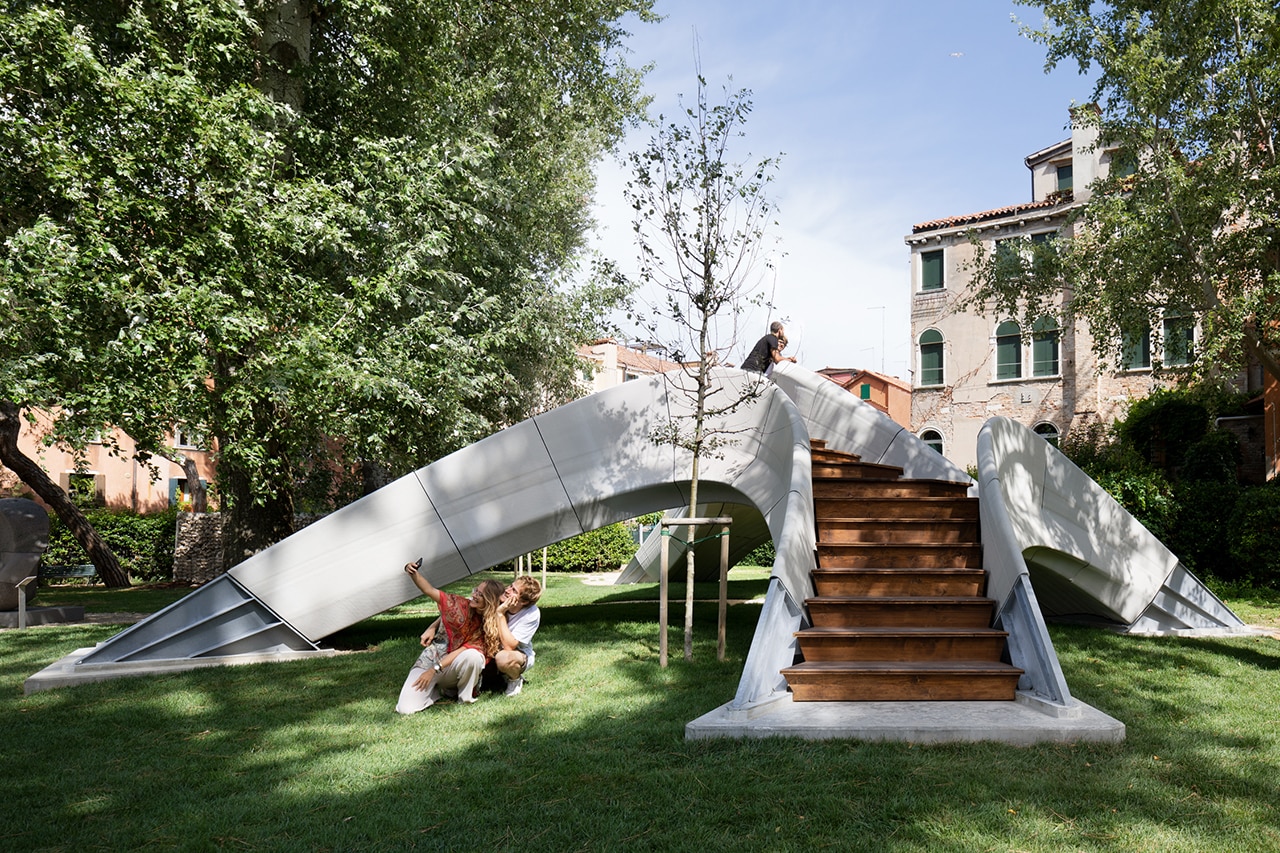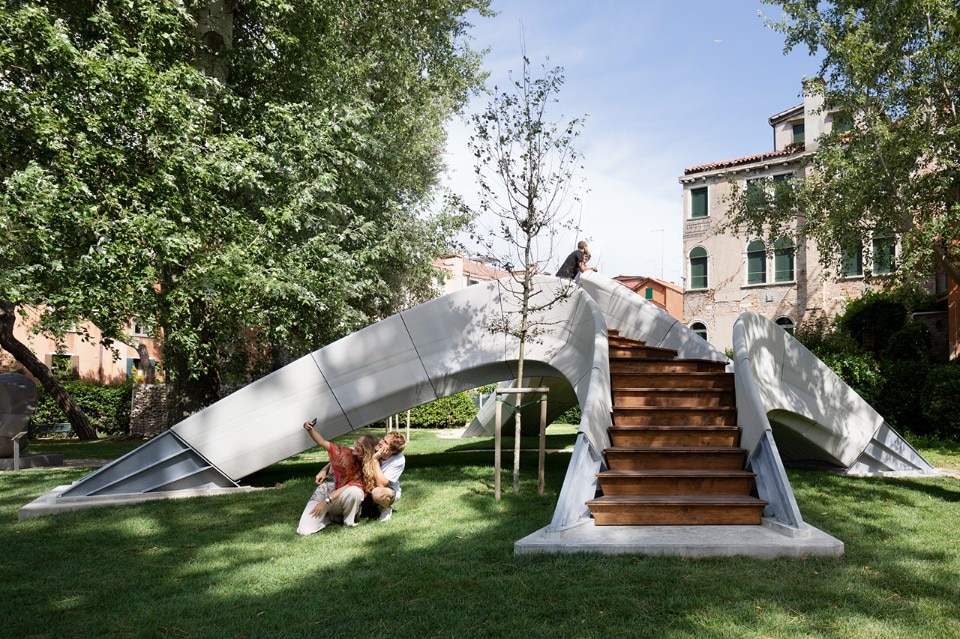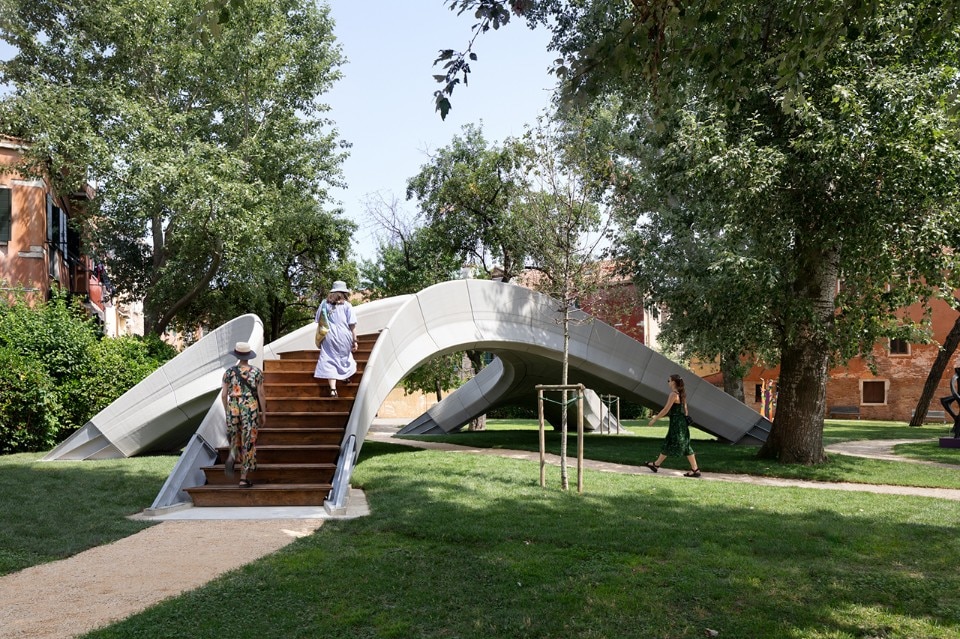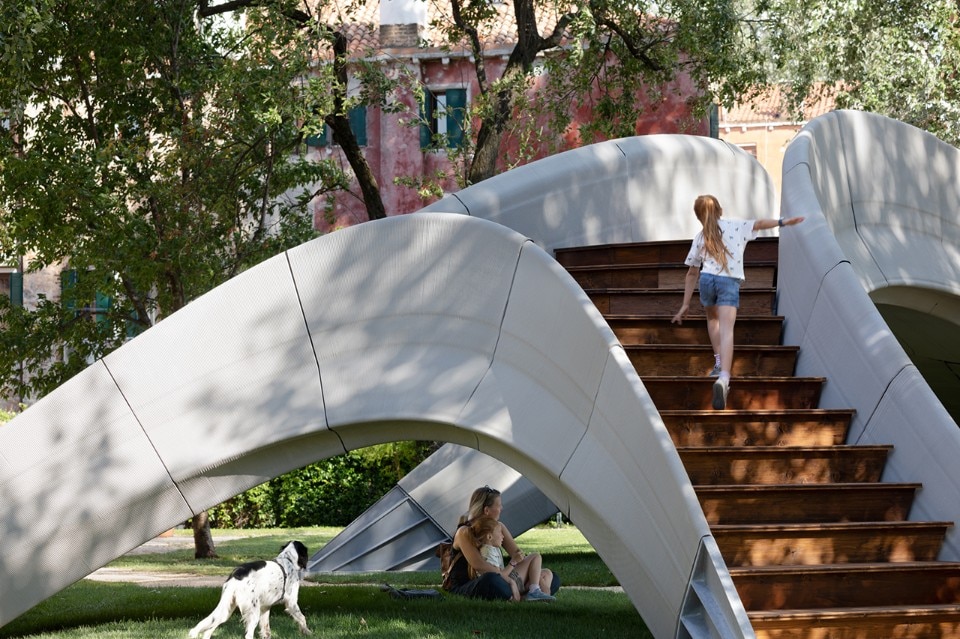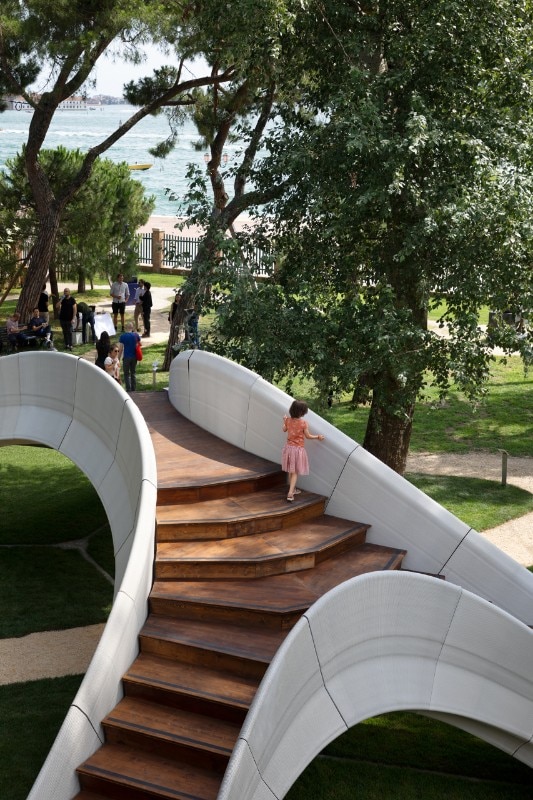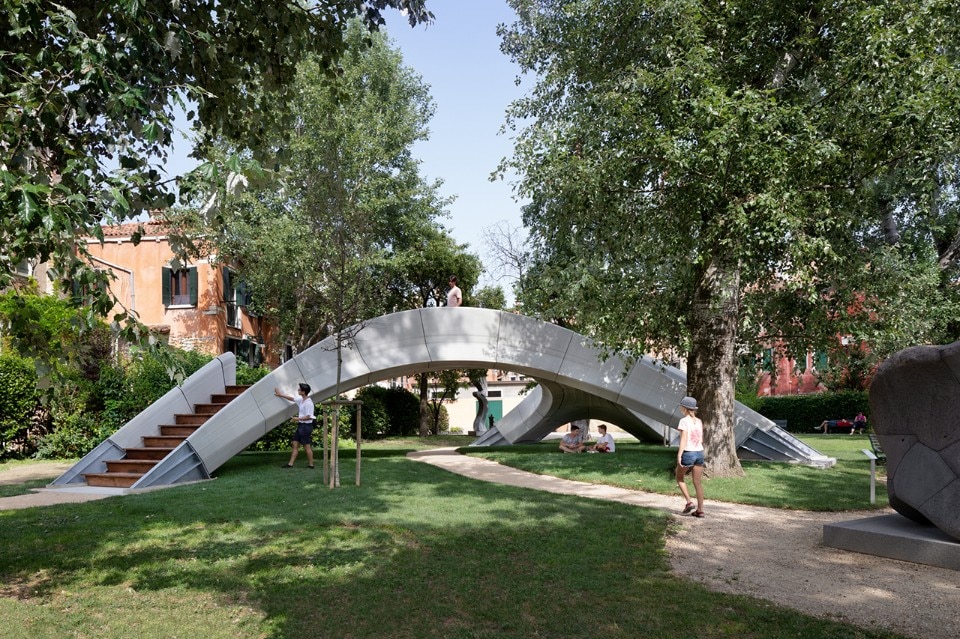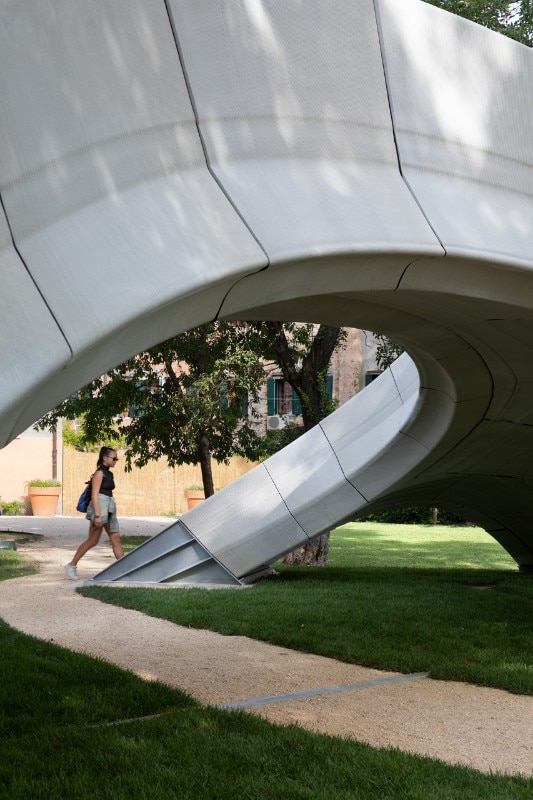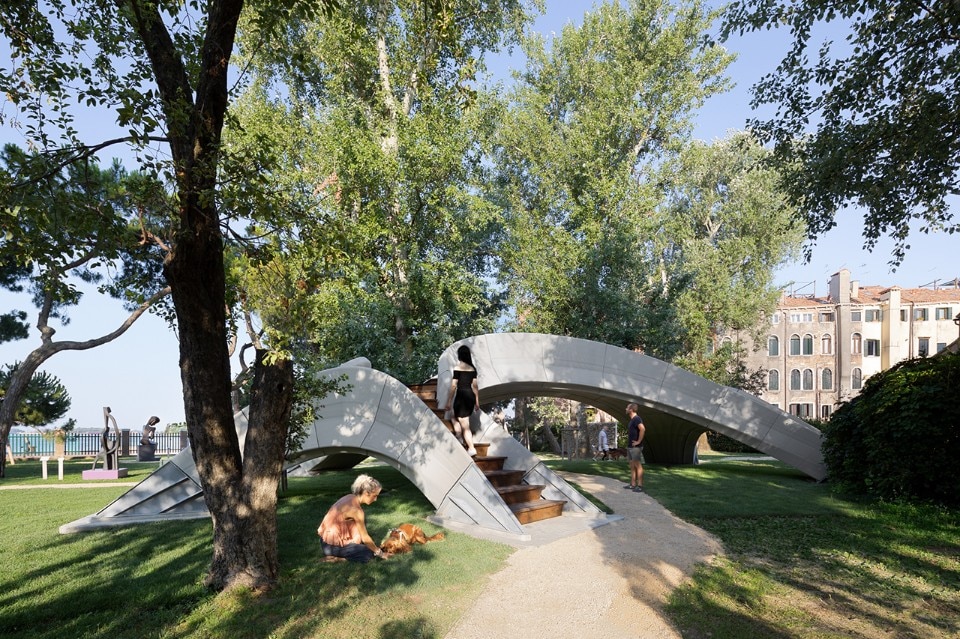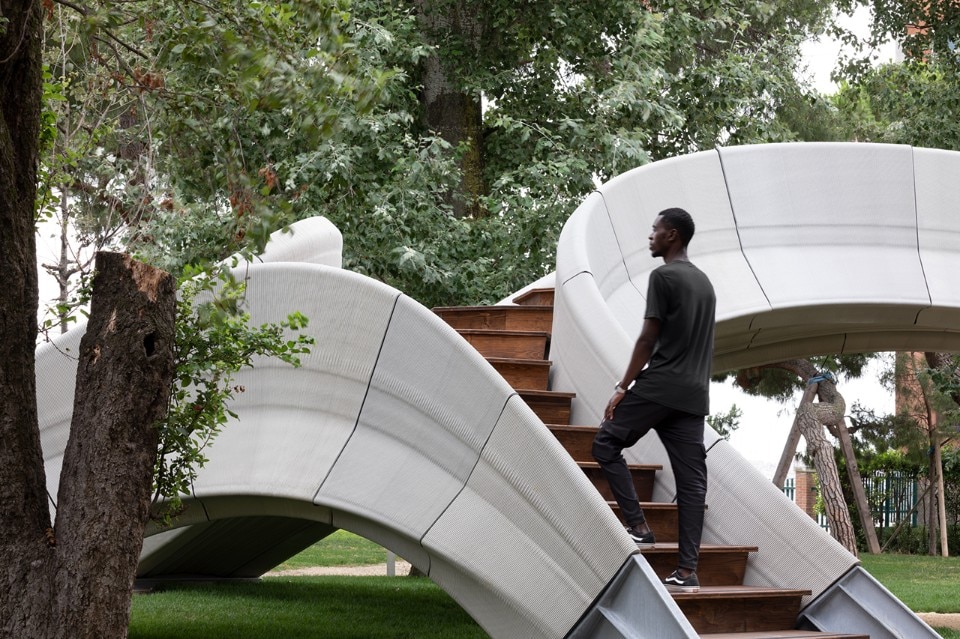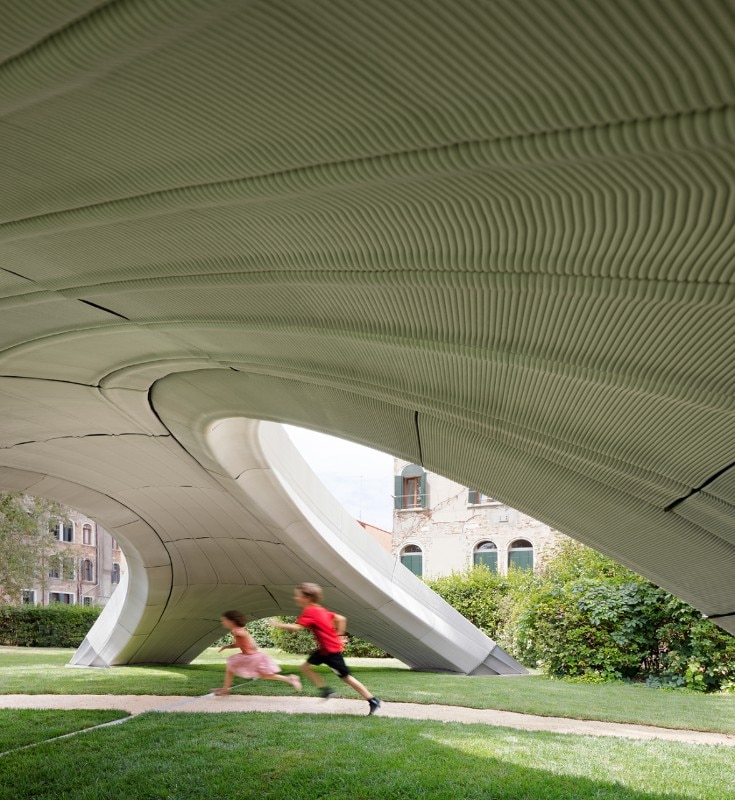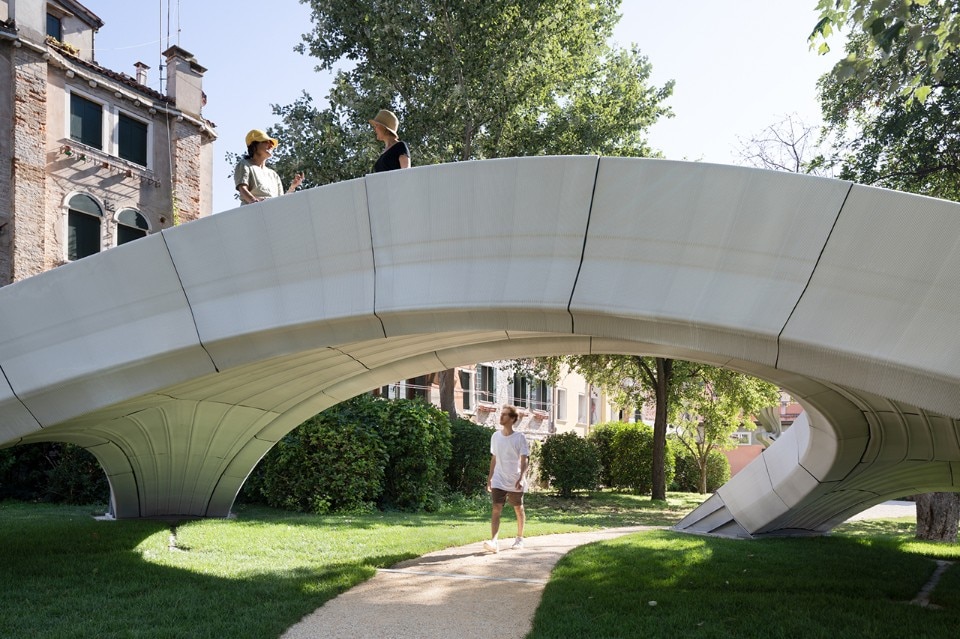Striatus in Venice is just the latest 3D Concrete Printed construction by Holcim, which wants to apply this production method to large-scale, standardised construction.
3D Concrete Printing is a very recent production technology. Here at Domus, we began to discuss its potential about a decade ago, with the first independent experiments: this method enables the production of objects, shapes and textures that would otherwise be impossible, as well as making it possible to produce small and very small-scale series, with potentially infinite customisation possibilities.
If the use of 3D Concrete Printing for the manufacture of objects and furniture is a new technique, its experimentation on an architectural scale is even more recent. There are very few prototypes and experiments around the world, and even fewer worthy of note. One of the companies working most seriously in this field is Holcim, a leading supplier of sustainable and innovative solutions in the building sector.
For Holcim, 3D Concrete Printing presents many advantages: it enables the creation of complex designs while reducing the constructions’ environmental footprint, reducing up to 70% of materials compared to conventional structures. It drives circularity, as concrete is infinitely recyclable. It also enables faster building at lower cost of construction, with fit-for-purpose inks, adapted to each application need.
The brand’s latest application is Striatus, the first of its kind 3D Concrete Printed bridge designed by Block Research Group and Zaha Hadid Architects in collaboration with incremental3D. The project has been made possible by Holcim and its custom-made proprietary ink, developed specifically for this application. Thanks to computational design and 3D concrete printing, the footbridge needs no reinforcement, – it is held together by compression. The bridge provides maximum strength while greatly reducing the use of materials.
Shajay Bhooshan, head of CODE – Computation and Design at Zaha Hadid Architects, explains the project's formal choices: "Curved surfaces allow us to use less raw material and are easier to print. Moreover, the geometries of the final product are specific to architecture, engineering and digital technology, all of which contributed to the project."
“Striatus establishes a new language for concrete that is digital, environmentally-advanced and circular by design,” explains Jan Jenisch, Holcim CEO.
Striatus – on display at the Giardini della Marinaressa in Venice during the 17th Architecture Biennale – is not the only project recently completed by Holcim. On the contrary, Jan Jenisch explains that “the potential of this strategy will become clear when it is applied to large-scale, standardised construction.”
Among the various 3D Concrete Printing applications developed by Holcim in recent months is a project in Malawi: the world's first 3D concrete-printed school, taking only 18 hours to build the walls and using 70% less materials than traditional construction techniques.
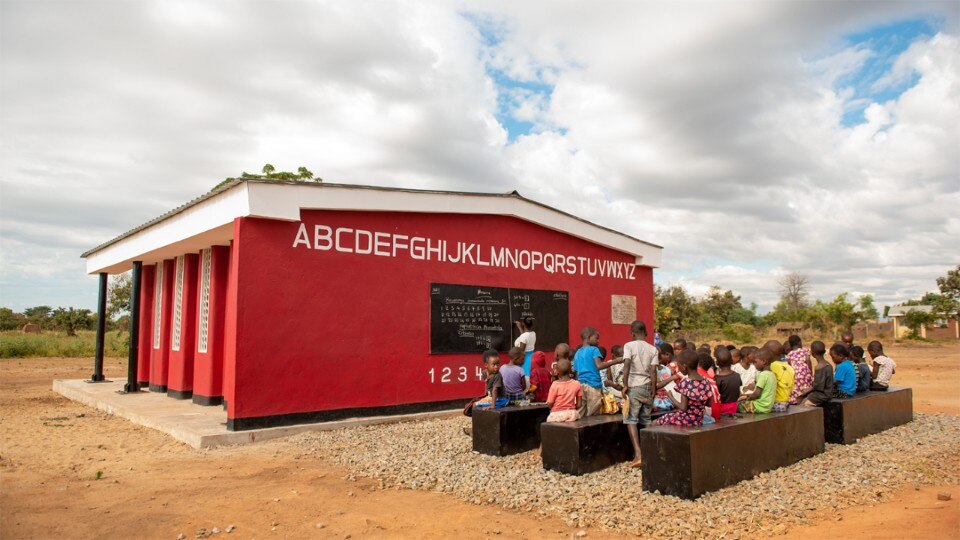
“Malawi has an estimated shortage of 36’000 classrooms according to UNICEF, estimating it would take 70 years to bridge this critical infrastructure gap using traditional building. With 3D concrete printing, we could bridge this gap within the next 10 years. And we are now expanding this concept to Kenya and Zimbabwe,” explains Jenisch.
A collaboration between Holcim, GE Renewable Energy and COBOD is also leading to the 3D printing of wind turbine towers. Thanks to innovative manufacturing technology, turbines can double in height, harnessing stronger winds and capturing 33% more renewable electricity at lower cost.
Holcim is working to address some of the most urgent challenges of our time: improving living standards for all with affordable and sustainable solutions; building more with less, promoting the circular economy; and becoming a net-zero company, putting sustainability at the heart of its operations.
- Company:
- Holcim
- Website:
- www.holcim.com
Discover more about Holcim's commitment to green design and construction on Instagram HolcimByDesign



